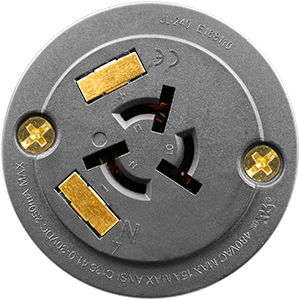How can we help you?
For Your Street Lighting



Your Nema PhotoControl Receptacles



For Your Street Lighting




The photocontroller JL-207 series is applicable to control the street lighting, garden lighting, passage lighting and doorway lighting automatically in accordance with the ambient natural lighting level, and midnight sleeping timer settings.
Designed with microprocessor circuits with either sensors of CdS photocell, photodiode or IR-filtered phototransistor and a surge arrester (MOV) is provided. Its quicker response with time delay of 0-10 seconds for turning-on offers easy-to-test feature.
Further, a preset 5-20 seconds time-delay for turning-off might avoid mis-operation due to spotlight or lightning during the night time.
The –HP version provides constant reliability as the relay has sufficient work life of over 50,000 cycles, and offers extra long work life when a metal Armor option is applied together.
This product meets the requirements of ANSI C136.10-2010 and the Standard for Plug-In, Locking Type Photocontrols for Use with Area Lighting UL773, Listed by UL for both US and Canada markets.




The photocontroller JL-202 series is applicable to control the street lighting, garden lighting, passage lighting and doorway lighting automatically in accordance with the ambient natural lighting level.
This product is designed on the basis of thermal - bimetallic structure that provides time delay over 30 seconds to avoid mis-operation due to spotlight or lightning during the night time. A temperature compensation system provides consistent performance regardless to the ambient temperature.
This product provides three twist-lock terminals meeting the requirements of ANSI C136.10-1996 and the Standard for Plug-In, Locking Type Photocontrols for Use with Area Lighting UL773, 4thEdition, dated Jan.19th, 1995.
JL-202 series has been listed by UL Inc for United States and Canada.




The dimming photocontroller JL-251/252/253 series is applicable to control any independent LED home/street lighting with DALI driver built-in automatically in accordance with the ambient natural lighting level.
This Street Lighting PhotoControl designed with microprocessor circuits with IR-filtered silicone sensor, a heavy duty surge arrester (MOV) is provided to protect the lamp from inrush current as well as impulse by lightening.
Further, a preset 10 seconds time-delay prevents excessive operation due to spotlight or lightning during the night time.
A heavy duty relay supports the work life of over 15,000 cycles, and offers extra long work life when an optional metal Armor is applied together.
This Street Lighting Control provides twist lock terminals and signal contacts meeting the requirements of ANSI C136.41-2013, as well as being listed by UL under the Standard for Plug-In, Locking Type Photocontrols for Use with Area Lighting ANSI/UL773.

FAQ About Street Light Photocell
Q1:How to Install a Street Light Photocell?
A1:Disconnect the Street Light Photocell power supply to ensure that the light Photocontroller is in a safe state during installation. Wire according to the correct connection method of the light Photocontroller and the lamp.
Q2:How does day night sensor work ?
A2:The Day Night Light Controller converts the light sense from Dusk to Dawn into current signal to control the Automatic Switch of Light and lanterns
Q3:Why use a Street Light Photocell?
A3:In order to better manage urban street lighting, the use of twist-lock type Photocell light controllers is beneficial to reduce urban power resource consumption. Through the intensity of natural light, the lamps are automatically turned on and off to reduce the manual management cost of urban street lamps.
Q4:Photocell Led Outdoor Lighting not work?
A4:Even after a smooth, incident-free installation, you may find that the photocontrols you've put in place aren't behaving as planned. This is often the result of unforeseen exterior conditions, such as ambient light, building design or harsh weather, or a change in light sensitivity.
Q5:Why the Photoelectric Light Control Sensor does not work?
A5:In addition to power issues, another common symptom is for lights with Photoelectric Control to blink or strobe sporadically. This behavior can be due to an outdoor condition, such as ambient city lights, nearby fixtures, snow or proximity to an all-white building, either limiting or amplifying light to the photo eye. To address this issue, you can adjust the arm of your stem and swivel Photocontrol away from the extra light source, as well as add a metal slide or sticker to limit light exposure. For flush mount Photoelectric Controls, you can use either the included domed shield, stickers or a combination of both to help regulate outside conditions.
Q6:What is Twist Lock Photocell ?
A6:PhotoControl Light Switch are semiconductors that are light detectors. They are essentially light dependent resistors, because they have an output that is proportional to the amount of light that falls upon them. Because of this effect, they are also known as photoresistorsors or light dependent resistors (LDRs).
Q7:How many kinds of Photocell Light Controllers?
A7:Photocell Light controllers are generally used as accessories for outdoor lighting fixtures. Generally, there are the following types of outdoor lighting: road lighting, landscape lighting, park lighting, outdoor parking lots, etc. These types of lighting usually have the same characteristics: The lighting area is large and belongs to outdoor.
Q8:How to Check a Electronic Photocell?
A8:Sometimes, you may find that your Dusk to Dawn Photocontrol is generally functioning properly, but that it is turning on or shutting off at intervals that are slightly outside of exact dusk or dawn times. Thankfully, adjusting this is a snap with your photocontrol's included add-on items.
